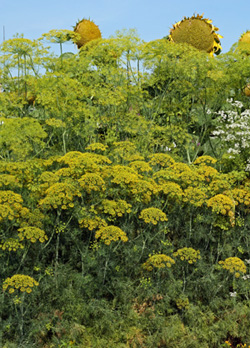
This annual plant with aromatic foliage and seeds, Anethum graveolens, is the sole species in that genus of the parsley family (Apiaceae or Umbelliferae). It is thought to have originated in Eastern Europe, southern Russia, central and southern Asia. It has naturalized in many other parts of the world, and can be seen as a roadside weed in July and August in many parts of the United States. Although we know it primarily as a culinary herb, it was used historically for medicinal and magical purposes (love potions, casting spells and for protection against witchcraft).
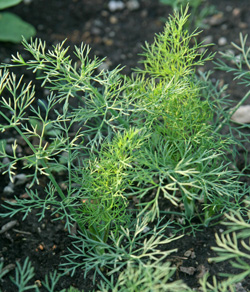
Dill plants grow 18 inches to 4 feet tall and resemble fennel. The soft, alternate, blue-green leaves are finely divided, giving a fern-like appearance. The leaves can be cut anytime after the plant is a few inches high until the seed stalk begins to form. Continually cutting the foliage back will help delay flowering. The plant has a tap root like a carrot.
When the weather gets hot or dry, one long flower stalk will be produced. The small yellow flowers are borne in small open umbels 1 to 3½ inches across, followed by light brown “seeds”. (Technically a type of dry fruit called a schizocarp but they look like a seed and therefore are normally referred to as seeds.)
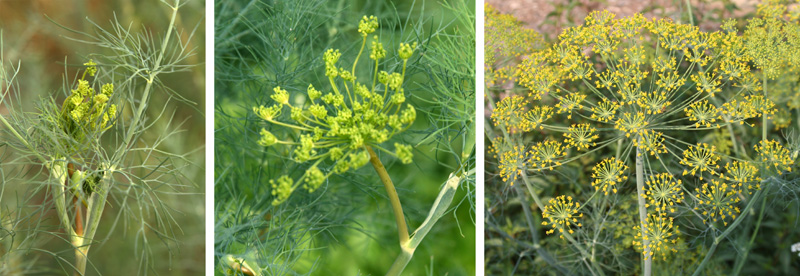
Deadhead spent flowers to prevent prolific self-seeding. The flat, winged, oval seeds are about ¼ inch long, with lengthwise ridges in the surface. The seeds will shatter when ripe, so flower heads should be cut from the stalks when the seeds are fully
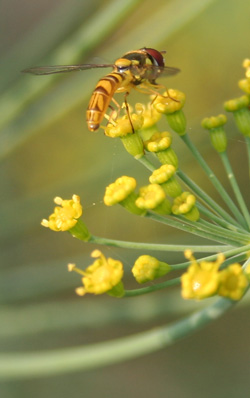
developed but before they have turned brown. The seed heads can be dried on screens or placed in paper bags and left in a warm, dry place for a week before separating the seeds from the stems. Store the seed in an airtight container in a cool location. Seed is viable for several years if kept dry and cool.
The flowers are attractive to small wasps, flies and other insects, including beneficial flower or hover flies (family Syrphidae), the larvae of which eat aphids.
Dill is very easy to grow. As with most herbs, it does best in full sun. The plant prefers average to rich, well-drained soil. Seeds should be planted in early spring, a week or two before the last hard frost, barely covering the seed as light is needed for germination. Successive plantings can be made every 10 days or so while the weather is cool for a continuous supply of leaves. Late summer plantings can be made for fall harvest, as it is tolerant of light frost, and late fall plantings can also be made for germination the
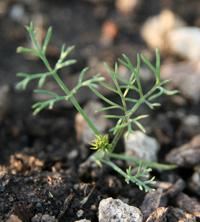
following spring. If the seed heads are not harvested, dill will readily self-seed, too. Transplants can also be used but because the plants develop so quickly this is not usually necessary to produce a good crop. Seeds will germinate in 10 to 14 days. Seedlings should be thinned to 3-6 inches apart when they are 3-4 weeks old. If grown in containers, a deep pot should be used to accommodate the long roots, and the plants may need to be staked, particularly if short varieties are not planted. Even in the garden, tall types can benefit from staking as the hollow stems can be easily damaged by wind, rain, and hail. Dill is not very competitive with other plants, so they should be kept well weeded.
Dill has few pest problems other than the occasional aphid infestation or powdery mildew, and is not attractive to deer. However, it is a larval host of the black swallowtail butterfly (Papilio polyxenes). The distinctive black and green-yellow caterpillars can eat a tremendous amount of foliage and often occur in groups. If there are too many, they can be picked off the plants but most people prefer to let them grow to become butterflies.
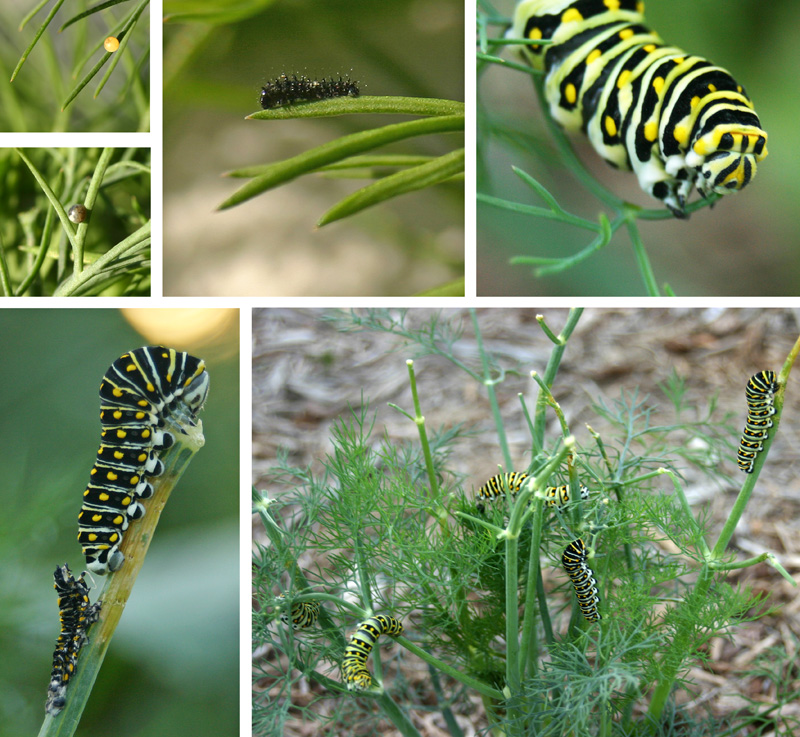
In addition to its use in the herb garden, dill can be an attractive ornamental addition to an annual or mixed border. The finely cut foliage is decorative, while when in flower the plants offer vertical interest. It looks at home in the cottage garden or other informal plantings.
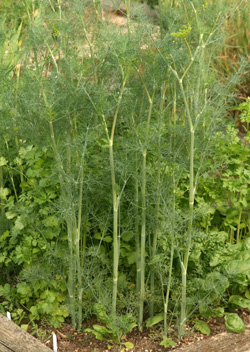
Several cultivars are available in two broad classes: those intended mainly for seed production and “slow-bolt” types intended mainly for leaf production; there are also some short types intended especially for containers. Some common cultivars include:
- ‘Bouquet’ is best for seed production. It grows 2-3 feet tall and 1½ -2 feet wide with blue-green foliage.
- ‘Dukat’ is similar to ‘Bouquet’ in size and color but with heavier foliage and later blooming. ‘SuperDukat’ is an improved form. Both have a strong flavor and high oil content.
- ‘Fernleaf’ is a short variety, good for containers. It has extra finely cut foliage, is slow to bolt, and only gets about 18” tall.
- ‘Hercules’ is a tall (up to 5 feet in ideal conditions), tetraploid variety bred for foliage production that is slow to bolt.
- ‘Long Island Mammoth’ has sparser, green foliage, produces large flower heads on multiple stalks, and is considered the best variety for pickling.
- ‘Vierling’ has blue-green foliage and strong stems, and the flower/seed heads are used commercially as a cut flower.
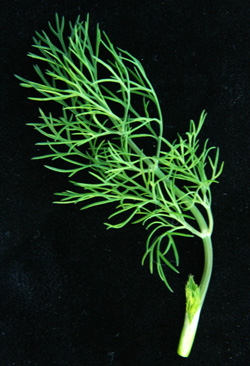
Both the foliage and the seeds are used for flavoring foods. The leaves are often referred to as dill weed to distinguish this from dill seed. The aromatic leaves can be used fresh or dried, although flavor rapidly declines when dried. The leaves wilt quickly once picked but will keep in a plastic bag in the refrigerator for about a week. The leaves can also be frozen (preferably in water), but will turn dark and some flavor will be lost, but not as much as with dried leaves. Seeds can also be used fresh or dried. Dill oil can be extracted from all above-ground parts of the plant.
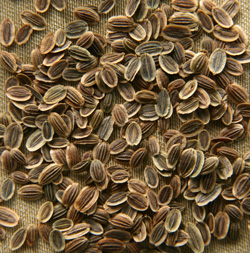
Dill is the quintessential herb for flavoring pickles but this herb can be used in many other ways. It is commonly used in eastern European, Russian and Scandinavian cuisine, as well as certain dishes from the Middle East and India, particularly in Punjab.
– Susan Mahr, University of Wisconsin – Madison
[/cets_callout_box]





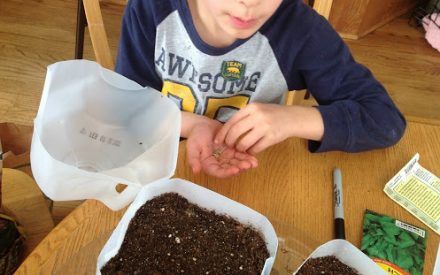 Seed Starting
Seed Starting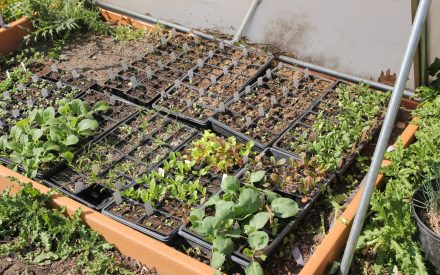 Growing Vegetables at Home: Questions and Answers
Growing Vegetables at Home: Questions and Answers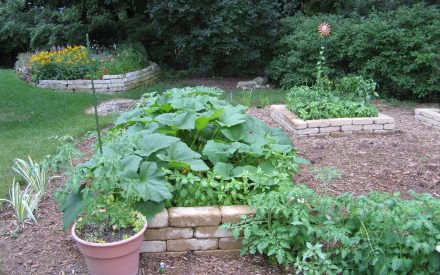 Growing Vegetables in Containers
Growing Vegetables in Containers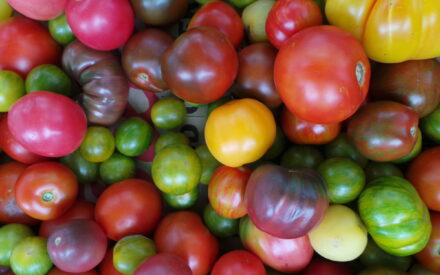 Homegrown Tomatoes for Wisconsin
Homegrown Tomatoes for Wisconsin


